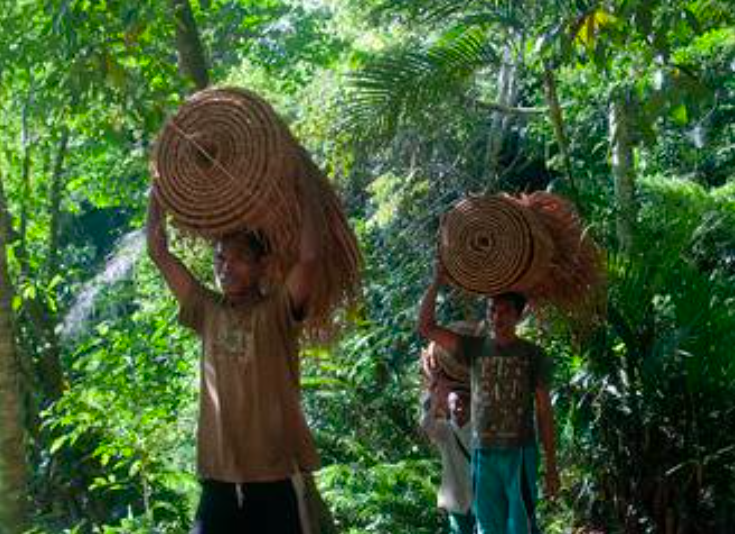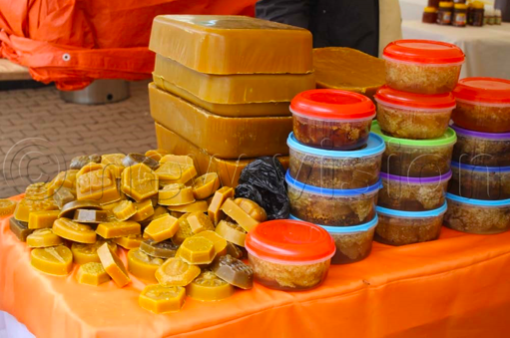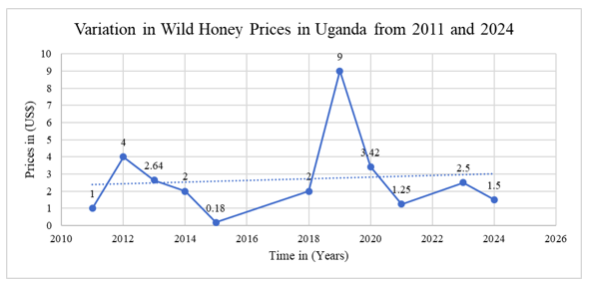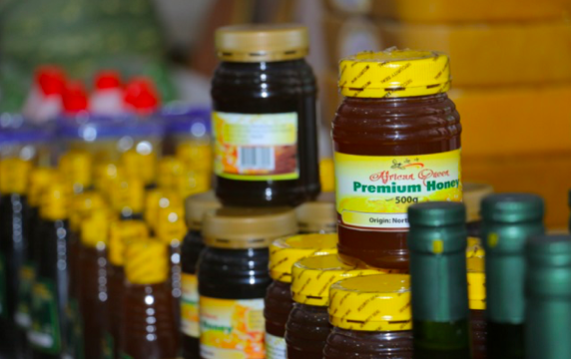
The Value of Honey, Charcoal, and Palm Leaves as Non-Timber Forest Products (NTFPs) in Uganda – Prospects for Pro-Poor Development of Communities
1 Jul 2023
Non-Timber Forest Products (NTFPs) are forests product and/or services other than timber. Such products include mushrooms, fruits, nuts, vegetables, fish and game, medicinal plants, resins, honey, essences, tree barks, and fibers such as bamboo, rattans, and a host of other palms and grasses. These are traded, marketed, and sold boosting income for poor people in Uganda, and the world over.
NTFPs contribute enormously to economic growth through the sale of food additives, spices, herbs, flavourings, and sweeteners. In June 2023, honey, for example, was selling forUS$2.09 to US$ 9.42 per kilogram in Kampala and between US$0.945 and US$ 4.272 per kilogram in Jinja District. Whereas beehives are set up in forest compartments of Uganda’s 506 natural Central Forest Reserves under Collaborative Forest Management with National Forestry Authority (NFA) for farmed honey, wild honey is taken from naturally forming hives in the wild sometimes in dead trees or termite mounds. Some of the wild honey products are shown in Plate 1.

The export price of wild honey from Uganda over the last five years has been quite varied. In 2011, the price was US$1.00 per kg, followed by a sharp increase to 4.00 US$ per kg in 2012. The price then dropped to 2.64 US$ per kg in 2013, before decreasing further to 2.00 US$ per kg in 2014. In 2015, the price dropped to its lowest point of 0.18 US$ per kg, before increasing to 2.00 US$ per kg in 2018. The price then rose to its highest point of 9.00 US$ per kg in 2019, before dropping to 3.42 US$ per kg in 2020. The most recent data shows the price of wild honey from Uganda to be 1.25 US$ per kg in 2021. Based on this data, it is predicted that the price of wild honey from Uganda in 2023 will be 2.50 US$ per kg, and in 2024 will be 1.50 US$ per kg as illustrated in Figure 1. The Uganda National Apiculture Development Organisation (2021) highlights that Uganda exports about 500,000 metric tonnes of honey with the Northern part of the Country leading the production chain with 640 metric tonnes. There is limited data on the local market consumption for honey in Uganda. Conclusively, the prices of wild honey picked 2019 to US$9 (see Figure 1).


NTFPs provide income-generating opportunities for poor and remote households For instance, honey, beeswax, and shea butter are some of the non-wood forest products with a lot of potential of contributing to nutrition, food security, household incomes, and forest conservation in the West Nile region in northwestern Uganda. Though the contribution of NTFPs to rural livelihoods is vital and often ignored (because of limited documentation of their values) when drafting resource management policies. Some NTFPs have significant cultural value, such as totems, incense, and other ritual items. Phillip Nyeko (2020) from Makerere University urges the Government of Uganda to prioritize NTPS that can be developed based on demand. For example, honey has important medicinal value such as being an anti-inflammatory, antioxidant, and antibacterial agent. It is used to treat coughs and burns and to heal wounds. This contributes to the community’s health and well-being in Uganda and across the globe.
Wildlife trade in Uganda is among the use rights enshrined in the Uganda Wildlife Act 2019 which permits trading in wildlife and wildlife products. Any interested Ugandan or any other person can apply for a Wildlife Use Right through the National Licensing Information Portal. In a study conducted by Tugume et al., (2019) around Mabira Central Forest Reserve, NTFPs such as charcoal offer the highest annual value ($ 327,686) and palm leaves-the lowest ($187). NTFPs from Mabira CFR have a high potential to enhance the livelihoods of the poor, women, and youth if sustainably harvested.
The aspect of using charcoal as biomass energy for over 80 percent of the population in Uganda needs further investigation since it degrades the forest ecosystem. Charcoal is often preferred since it is affordable, burns with limited smoke and is easier to transport. By some estimates, 6 million tonnes of wood are annually transformed into 1.8 million tonnes of charcoal, an issue of great concern. Alternatives could focus on green energy such as massive production and the use of briquettes. As compared to the Wood-Forest Sector, the NTFPs sector’s total economic value is clouded by inaccurate assessments, of this sector, though the Forestry Department of Uganda estimates that NTFP commercialization contributes US$17,871,755 per year to national income, an equivalent of 17% of the forest sector's contribution to Gross Domestic Product (GDP) per annum.
-

Dr Taddeo Rusoke
Research Associate
We support the free flow of information. Please share:
More content
-

What Foot and Mouth Disease-free means for South Africa’s game meat trade
Ms Lydia Daring Bhebe…Explore the latest developments in South African provinces achieving and maintaining Foot and Mouth Disease (FMD) free status…
Articles -

The world wildlife trade regulator is 50 – here’s what has worked and what needs to change
Daniel Challender…Most countries implement Cites, the Convention on International Trade in Endangered Species of Wild Fauna and Flora as…Articles -

Enabling Sustainable Wildlife Trade
Prof Francis VorhiesEnabling sustainable wildlife trade is a key policy measure for growing Africa's wildlife economy. In this respect, CITES…
Articles -

Has CITES become too complicated to be effective?
Prof Francis VorhiesGovernments agreed to the text of CITES in the 1970s, which is quite straightforward. However, the agreement’s implementation…
Articles -

From poachers to providers: Can Africa's wild meat market save wildlife?
Dr Wiseman NdlovuHave you ever considered how wild meat could be more than just a cultural staple but also a…
Articles -

As a fellow of the African Wildlife Economy Institute (AWEI), I am excited to attend the upcoming 3rd…
Articles -

A theory of change to improve conservation outcomes through CITES
Dr Michael 't Sas-Rolfes…Here we articulate the implied theory of change (ToC) underpinning the design and operation of CITES (Convention on...
2025Research -

Wild Meat Value Chain Integration Systems: Opportunities for Value Chain Formalisation and Scaling in Africa
Dr Wiseman Ndlovu…Establishing a legal, safe and sustainable wild meat sector promises to potentially reduce demand for illegally sourced meat...
2025Research -

AWEI's 2024 Wildlife Economy Dialogue Series
Ms Emily TaylorRediscover 2024: A year of insight and inspiration
In 2024, AWEI proudly hosted three ground-breaking dialogue series in…
Articles
Get updates by email
Through impactful research, stakeholder engagement, and professional development, AWEI is supporting the wildlife economy across Africa. Please subscribe for occasional updates on our work and forthcoming events.
Sign up for a quarterly dose of AWEI insights
In a complex and changing world, AWEI generates strategic ideas, conducts independent analysis on wildlife economies, and collaborates with global scholar-practitioners to provide training and expertise for biodiversity conservation, climate resilience, and inclusive economic opportunities in Africa.
